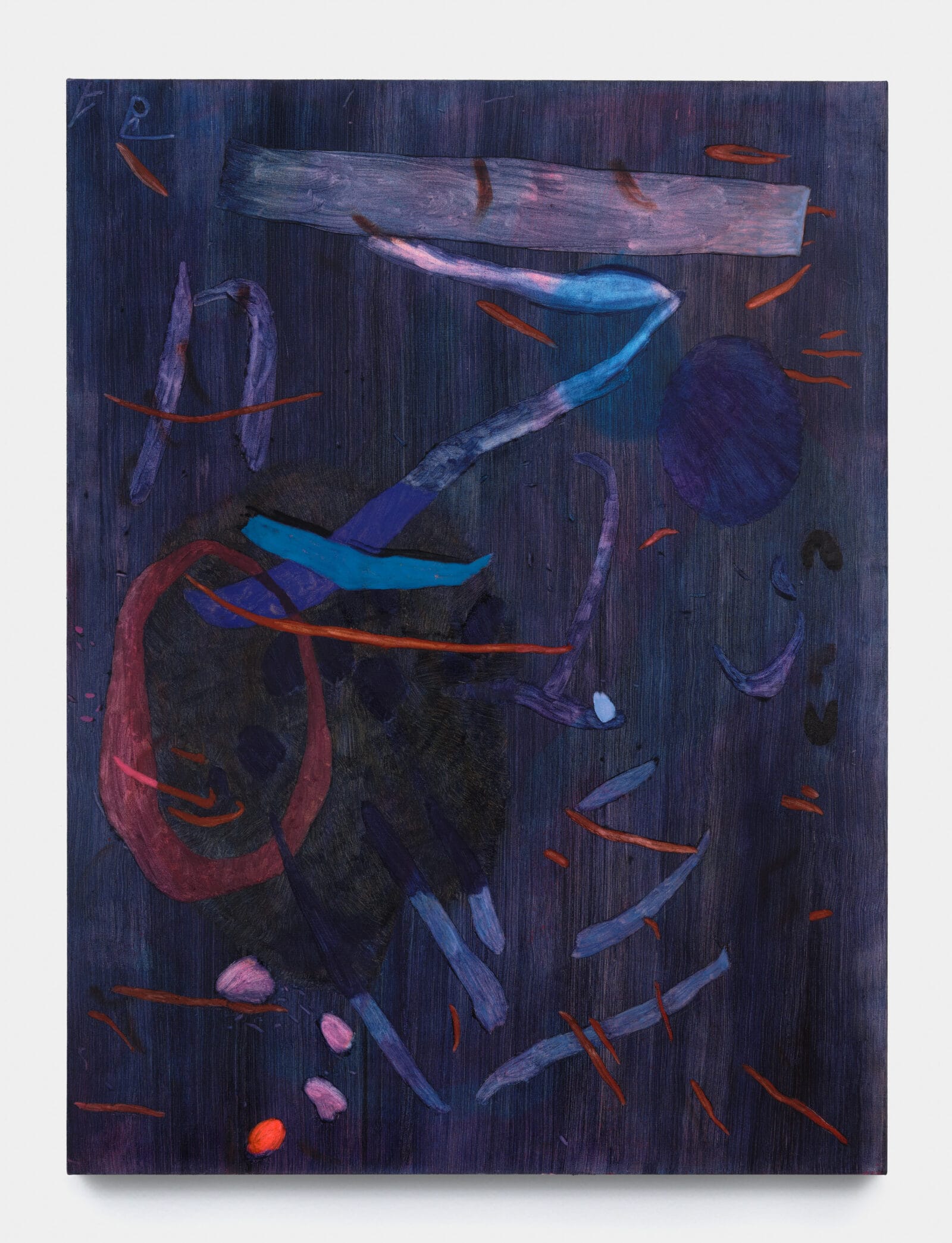
M+B is pleased to present Wich Language, an exhibition of new works by Clare Grill. This is the artist’s second solo show with the gallery. The exhibition opens on March 1 and will run through April 13, 2024.
A silhouette is traced like a freely-drawn shadow in dusty rose. It might be a craggy stick, the delicate motif of an engraved locket, or marks scratched a little heedlessly on the golden shore. A W sits above something like its mirror image, both of them estranged by a stroke to their left. Is this a cipher, a name, or both (a signet)? No, more like a lump of pure sound. It feels the way a word should look. It is an idea—the idea of holding hands. Gently, a green fence holds them in place. Sand.
•
Wich language, which language is that? Not one we learn but one we make, one twisted on its side. Creativity curls the rules. Tell the truth but tell it slant. Kids learn like that—on a slant. Hidden writing offers secrets we stumble on. They might turn out to be whole truths, half truths, other truths, or nothing at all. Perhaps this is why the paintings have no straight lines. We are far from the supposed epiphany of reason. Did you know that most witches were actually healers? Theirs is knowledge, too.
•
On a velvety indigo ground, rumpled U’s float and twist across the canvas, untouched by gravity, like soaring swifts. To complete their circuit, boomerangs were made to spin. Some stretch, squirm, and straighten out. There they are again, pinky peach, atop a field of slightly sooty baby blue. They turn around an F whose stem metamorphoses into other letters’ arms and curves. Forget the vowels, make a secret. Try it, try it, try it again. Too many marks dispel it. Shapes flicker softly, in and out—a wisdom born of torchlight. Myrrh. Wax.
•
Wich language dazzles gradually. Its secrets blind like the sun, but not quite, since its truths surpass enlightenment gains. Wich language is not written or spoken form so much as an alternate realm for the personal, the profound, and the deliberately withheld. Like abstraction, what it means to you is not what it means to me. And so—somehow—we intuit its lesson: look askance. That’s why the artist could make these paintings by watching their source, rather than only her brush, in a kind of blind drawing. The paintings transvalue blindness in this way. For we see like that—until things begin to shine.
— Elizabeth Buhe